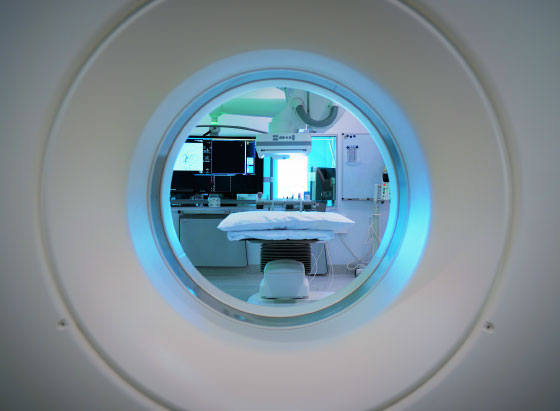WHAT IS TIPS?
TIPS is a procedure that lowers pressure in the portal vein. That’s the vein that moves blood to your liver.
WHY WOULD MY DOCTOR REFER ME TO HAVE THIS PROCEDURE?
The TIPS procedure is usually performed in patients with liver cirrhosis. If you have this condition, the normal blood flow through your liver is blocked by scar tissue, which increases the pressure in your portal vein. The increased pressure in your portal vein makes thin veins in your stomach become abnormally enlarged and so are at risk of bleeding. Another symptom of liver cirrhosis is an abnormal collection of fluid (ascites) in the abdominal cavity.
You may be advised to undergo TIPS if you have varices (dilated veins caused by high portal vein pressure) which bleed acutely or recurrently and have not responded to other treatments.

Wondering If You Qualify forTransjugular Intrahepatic Portosystemic Shunt (TIPS)?
How do I prepare for the procedure?
You will need to take routine blood tests and inform the doctor if you are taking any medicines to thin the blood (anti-coagulants) as you may have to be stop or adjust these temporarily. Examples include warfarin, apixaban and clopidogrel (Plavix).
You cannot eat for 6 hours before the procedure, but you may be able to drink small amounts of water.
What happens during the procedure
You will be conscious but sedated for the procedure, which the interventional radiologist will carry out using imaging for guidance.
The interventional radiologist will insert a thin, flexible tube, called a catheter, into a blood vessel in your neck. They’ll use an imaging test, usually an x-ray with contrast dye, to guide the catheter until it gets to your liver. Then the interventional radiologist will create a channel from the hepatic vein, which is the vein that takes blood out of the liver, to the portal vein. This channel allows blood to bypass your liver.
The TIPS stent, which is a wire mesh tube, will be placed to keep the channel open. Then, the interventional radiologist can measure the blood flow in your veins to make sure the pressure drops.
If it’s still too high, they might use a balloon on the catheter to open the stent wider.
The procedure usually takes 2 to 4 hours.

What is the recovery
normally like?
After the procedure, you will be monitored closely, and your head will be kept elevated for a few hours. Often, symptoms are mild or controlled enough that you may go home the next day. However, the amount of bleeding that can occur can sometimes be life threatening and those patients are monitored in intensive care beforehand and during recovery.
You should be able to resume your normal activities in 7 to 10 days.
Follow-up ultrasounds will be performed frequently after the TIPS procedure to make sure that it remains open and functions properly.
What are the risks?
Because a liver suffering from cirrhosis is shrunken and the liver tissue can be very hard, it is possible to puncture the outside of the liver. This can cause bleeding which requires further treatment.
Another risk is that after the TIPS procedure ammonia from the intestine might bypass the liver and be delivered to the brain, which may result in a condition called hepatic encephalopathy, the symptoms of which range from mild (alterations in thinking) to severe (confusion and coma).
Due to the shunt, there is an increased amount of blood flowing directly to the heart, which can cause heart failure. If you experience this, your doctor will decrease or disrupt the blood flow through the TIPS.
What are the benefits?
A TIPS is designed to produce the same physiological results as a surgical shunt or bypass, without the risks that accompany open surgery.
TIPS is a minimally invasive procedure that typically has a shorter recovery time than surgery and no surgical incision is necessary.
Your TIPS should have less of an effect than open surgical bypass on future liver transplantation surgery because the abdomen has not been entered, thus there is no scar tissue formed in the abdomen.
HOW LONG DOES IT TAKE TO GET THE RESULTS FROM MY PROCEDURE?
Prior to leaving the hospital, you may have an ultrasound exam to determine the effectiveness of the procedure and placement of the stent.
The interventional radiologist can advise you as to whether the procedure was a technical success when it is completed.
Find a Doctor
Our Doctor Finder is a comprehensive database of interventional radiologists practicing in Australasia.
Use the search fields to search based on geographic location or by area of practice.
